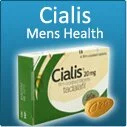There are various kinds of parasites that infect living beings. Parasites are living beings that need other living beings (hosts) for their survival. They take nutrition from the host and cannot complete their entire life cycle without the host’s help. Many of these parasites can cause severe diseases in humans. There are a large amount of parasites that need human beings for survival, either during a certain stage of their life or throughout. Most of these dreaded cases are found in developing countries especially in the tropical and sub-tropical regions of Asian and African continents, yet their impact can be felt anywhere, for e.g. the U.S. has more than seven million cases of trichomoniasis every year. Almost one and a half million cases of toxoplasma and another two million of giardia can affect Americans every year thus making parasitic infections a considerably serious threat albeit on a smaller scale. So lets understand what kind of parasites affect humans.
Parasites
Parasites that affect humans can be classified into three main categories: helminthes, protozoa and ectoparasites.
- Helminths are wormlike living things that can be seen without the need of external aids. Helminths can survive without their host for certain stages of their life, especially when these multi-cellular beings in their adult form need to reproduce. They are unable to reproduce inside the host and will seek to move out for completing their lifecycle. Helminths are further classified in three main categories: flatworms, thorny-headed worms and roundworms.
- Protozoa are unicellular organisms that thrive within the human body. The internal environment of a human body is ideal for their reproductive activities, although they can survive outside as well. There are two major types of human-detrimental protozoa that are classified on the basis of their transmission from one host to another.
- One is the infected feces to mouth of new host type in which the protozoa exist in the human intestine. This type of protozoa moves out of the host body through the fecal matter excreted from the intestines. When the infected feces comes in contact with water, food or other humans the protozoa get transferred to it. When this contaminated water, food or the unhygienic items with the protozoa come in contact with the mouth of a suitable host; these protozoa infect the new person.
- The other mode of transmission is through carriers like mosquitoes, flies, etc. In this mode the parasite is present in the host’s blood. When the carrier bites an infected person, the parasites from the blood get transferred to the carrier. When this infected carrier bites another host, the parasites get transferred, infecting this new host. Malarial parasites are the most prominent parasites in this category.
- The third category of parasites is ectoparasites, which are not always easily visible to the naked eye, but need human hosts for their survival. These organisms survive on human blood by sucking it, usually on the outside or just below the human skin. In most cases they act as germ carriers, increasing the sphere of infection by moving from one infected host to another. Ticks, lice, fleas, etc. are examples of ectoparasites.
Various ways in which parasites reach human hosts
Animals – Animals especially pets are highly conducive grounds for development and spread of parasites that can harm humans. Diseases caused by such sources are termed as zoonotic diseases. Meat of infected animals, when not cooked properly may contain various parasites that can be transferred to the human host eating it. Cows with cryptosporidiosis can transfer the parasite if they contaminate drinking water or fruits watered by the contaminated water that are consumed by humans without washing properly. Household pets too spread quite a few parasites such as hookworms and ascarids.
Insects – Just like animals, insects too play a major part in the spread of parasites. Due to the huge population density and variety of insects in a comparatively small area, the possibility of spreading parasites increases proportionately. Parasite carrying insects are known as vectors. Vectors usually form a very important part of parasite development, usually getting affected by it as well. Malarial and dengue related parasites enter mosquito blood stream through the saliva as the mosquito feeds. The parasites develop within the mosquito and are then transmitted to another host when it feeds again.
Blood – This happens when normal blood comes in contact with blood infected by parasites. There are two most likely conditions in which blood to blood transmission of parasites can occur. One is when users share needles, syringes etc. When a person having parasite infection in the blood shares a syringe with a normal person, the parasite may transfer to the normal person. The other most likely way is blood transfusion in which the blood donor has parasites in their blood and this blood is used for a normal patient. Parasites like toxoplasmosis, malaria, babesiosis, African trypanosomiasis, chagas disease etc. can be spread in this manner. Yet, due to the increasing control in blood donor screening as well as the menace of diseases like HIV being spread through sharing of needles; the likelihood of parasites being passed in this manner has reduced.
Food – This is another primary source of parasite infiltration. Parasites that survive through undercooked meat, fish and vegetables can enter human body system and start their lifecycles. Unhygienic eating conditions, dietary habits, contamination due to unclean food service, etc. can easily contribute to the parasite’s human body entry. Cyclospora cayetanensis, giardia intestinalis, and Cryptosporidium spp. are some of the most common parasites likely to infect hosts through food.
Water – Due to its abundance in the world and its overall importance in human life, human beings cannot resist water. Not only is it used for normal essential activities like drinking, cleaning, bathing, etc. it is also a major factor in human leisure activities. This increases human contact with water. Proportionately possibility of parasites that use water, as method of spreading in humans, is also quite high. Especially untreated water or water in leisure activities or water in natural conditions is the main source of parasitic infiltration in humans.
Precaution for Travelers
One of the most susceptible demographic amongst the U.S. population, most likely to encounter parasitic infiltration, are travelers that visit developing countries. Due to various social, political, economical reasons; developing countries are unable to maintain the required amount of sanitation and public health conditions that will control parasite infections in their citizens. Hence it is essential that travelers visiting these countries understand the overall situation and take as many precautions as possible to avoid contracting the parasites. Apart from the information given above about how parasite infection occurs, travelers should observe the following general precautions (this list is not comprehensive and may need additional precautions based on the travel destination):
- Travelers should learn about their travel destination and understand all advisories issued against their place of visit.
- If there are any vaccines or prophylactic treatments, available for possible local infections, then the travelers should take them and learn about their availability at the travel destination.
- Travelers should discuss with their personal physician for any precautions to be observed to prevent parasite infections that are specific to the travel destination.
- Travelers should maintain hygienic conditions and consume food & water from trusted sources like municipal water supplies. They should drink water boiled for at least a minute only or else use only bottled water.
- Travelers should avoid water sports, swimming and other recreational water based activities.
- Travelers should follow good habits such as cleaning and washing hands regularly.
- Travelers should use insect repellants even in places where vector borne infection is less likely.
- Travelers should only use pasteurized milk or dairy products.
- Travelers should use proper protective clothing and take all care to avoid exposing skin as much as possible.
- Travelers shouldn’t eat uncooked, raw food or unpeeled, unwashed vegetables and fruits. Users should avoid roadside food.



 June 28th, 2011
June 28th, 2011  admin
admin
 Posted in
Posted in  Tags:
Tags: 


